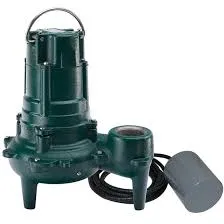English
- Afrikaans
- Albanian
- Amharic
- Arabic
- Armenian
- Azerbaijani
- Basque
- Belarusian
- Bengali
- Bosnian
- Bulgarian
- Catalan
- Cebuano
- Corsican
- Croatian
- Czech
- Danish
- Dutch
- English
- Esperanto
- Estonian
- Finnish
- French
- Frisian
- Galician
- Georgian
- German
- Greek
- Gujarati
- Haitian Creole
- hausa
- hawaiian
- Hebrew
- Hindi
- Miao
- Hungarian
- Icelandic
- igbo
- Indonesian
- irish
- Italian
- Japanese
- Javanese
- Kannada
- kazakh
- Khmer
- Rwandese
- Korean
- Kurdish
- Kyrgyz
- Lao
- Latin
- Latvian
- Lithuanian
- Luxembourgish
- Macedonian
- Malgashi
- Malay
- Malayalam
- Maltese
- Maori
- Marathi
- Mongolian
- Myanmar
- Nepali
- Norwegian
- Norwegian
- Occitan
- Pashto
- Persian
- Polish
- Portuguese
- Punjabi
- Romanian
- Russian
- Samoan
- Scottish Gaelic
- Serbian
- Sesotho
- Shona
- Sindhi
- Sinhala
- Slovak
- Slovenian
- Somali
- Spanish
- Sundanese
- Swahili
- Swedish
- Tagalog
- Tajik
- Tamil
- Tatar
- Telugu
- Thai
- Turkish
- Turkmen
- Ukrainian
- Urdu
- Uighur
- Uzbek
- Vietnamese
- Welsh
- Bantu
- Yiddish
- Yoruba
- Zulu
Telephone: +86 13120555503
Email: frank@cypump.com
Nov . 20, 2024 01:12 Back to list
in line sewage pump
Understanding In-Line Sewage Pumps An Essential Component for Wastewater Management
Sewage management is a critical aspect of modern infrastructure, ensuring that wastewater is efficiently transported and treated. At the heart of these systems lies the in-line sewage pump, a vital component that facilitates the movement of wastewater through sewer lines, reducing the risk of flooding and contamination. In this article, we will explore the workings, benefits, and applications of in-line sewage pumps, shedding light on their importance in contemporary sewage systems.
What is an In-Line Sewage Pump?
An in-line sewage pump, as the name suggests, is installed directly within the pipeline. This design allows sewage and wastewater to flow through the pump without requiring a dedicated basin or holding tank. Typically, these pumps are employed in both residential and commercial wastewater systems, where efficient and reliable sewage transport is crucial.
These pumps are designed to handle not only liquid waste but also solid materials, making them particularly effective in environments where traditional pumps may struggle. Depending on the model, in-line sewage pumps can handle particles of various sizes, thus providing a robust solution for different sewage disposal needs.
How Do In-Line Sewage Pumps Work?
The operation of an in-line sewage pump is relatively straightforward. When wastewater enters the pump, an impeller creates a centrifugal force that propels the sewage forward through the pipeline. This action ensures that wastewater moves smoothly through the system, reaching treatment facilities without significant delays.
One of the key advantages of in-line pumps is their ability to operate in a vertical or horizontal orientation. This flexibility allows for easy integration into existing plumbing systems, adapting to the specific needs of various installations. Additionally, many modern in-line sewage pumps are equipped with advanced control systems that monitor performance and detect issues, enhancing the overall efficiency of the sewage transport process.
Benefits of In-Line Sewage Pumps
1. Space Efficiency One of the most significant advantages of in-line sewage pumps is their space-saving design. Since they are integrated into existing pipelines, they eliminate the need for large holding tanks, which can be both costly and space-consuming.
in line sewage pump

2. Energy Efficient In-line pumps typically operate at a lower energy consumption rate compared to traditional sewage pumps, making them a more environmentally friendly option. This efficiency not only reduces operational costs but also lessens the overall carbon footprint of sewage management systems.
3. Reduced Maintenance Requirements With fewer moving parts and a robust design, in-line sewage pumps generally require less maintenance than other types of sewage pumps. This durability means that they can function effectively for longer periods, reducing downtime and repair costs.
4. Versatility In-line sewage pumps can handle a wide range of sewage applications, from residential homes to industrial facilities. This versatility allows for their use in various settings, making them a great choice for different types of wastewater management.
5. Improved Flow Management By facilitating the direct flow of sewage through pipes, in-line pumps help to avoid clogging and backups, which can lead to significant issues like flooding and contamination.
Applications of In-Line Sewage Pumps
The applications for in-line sewage pumps are diverse. They are often used in municipal sewage systems, where they help transport wastewater from homes and businesses to treatment plants. They are also employed in commercial buildings, agricultural settings, and industrial facilities, where efficient waste transportation is critical.
Additionally, in-line sewage pumps are an essential component in managing stormwater runoff. During heavy rains, these pumps can help direct excess water away from populated areas, thus preventing flooding and protecting infrastructure.
Conclusion
In-line sewage pumps represent a vital component of modern wastewater management systems. Their space-saving design, energy efficiency, and durability make them an attractive choice for a wide range of applications. As cities and industries continue to evolve and expand, the role of in-line sewage pumps will likely become increasingly prominent, ensuring that our wastewater management systems are both effective and sustainable. Proper integration and maintenance of these pumps will be key to the success of future sewage transport solutions, safeguarding public health and the environment.
-
Heavy-Duty Mining Sludge Pumps - Wear-Resistant Slurry Handling
NewsAug.02,2025
-
Horizontal Split Case Pump with GPT-4 Turbo | High Efficiency
NewsAug.01,2025
-
ISG Series Pipeline Pump - Chi Yuan Pumps | High Efficiency, Durable Design
NewsAug.01,2025
-
Advanced Flue Gas Desulfurization Pump with GPT-4 Turbo | Durable & Efficient
NewsJul.31,2025
-
ISG Series Vertical Pipeline Pump - Chi Yuan Pumps | Advanced Hydraulic Design&Durable Construction
NewsJul.31,2025
-
ISG Series Vertical Pipeline Pump - Chi Yuan Pumps | Energy Efficient & Low Noise
NewsJul.31,2025










